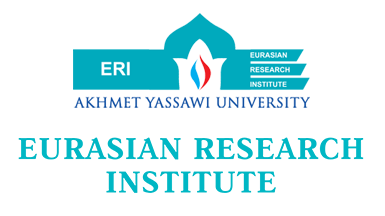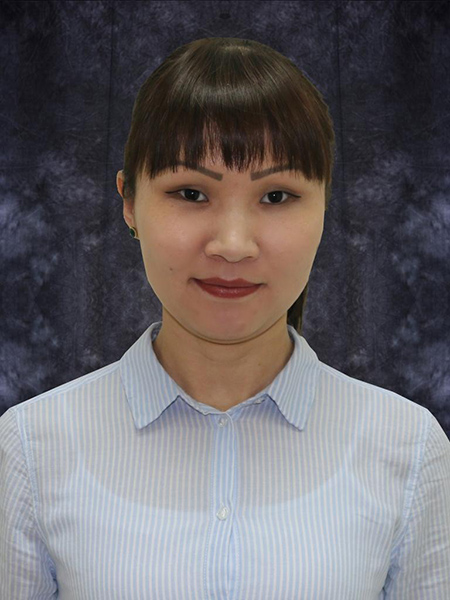Silk Road of Steel: Central Asian Vector of South Korea’s Foreign Policy

South Korean president Moon Jae-in’s eight-day tour to Central Asia emphasized the special role of relations with the Central Asian countries. The visit to Turkmenistan, Uzbekistan, and Kazakhstan on the way back from the US, on April 16-23, 2019, is expected to lead to new joint projects worth more than US$28 billion in total [Yonhap, 2019]. Based on the President Moon’s foreign policy project “the New Northern Policy”, the trip further strengthened Korea’s economic and political ties with the Central Asian countries. On their turn, Central Asian states also confirmed their interest in enhancing bilateral and multilateral cooperation.
In the 1990s and early 2000s, South Korea’s interest in the Central Asian region was not included in the priority regions of cooperation, when relations were carried out through the educational exchanges and support of local ethnic Korean communities. During Roh Moo-hyun’s tenure (2003-2008), South Korean government increased its profile in the region, especially since 2007, when at the initiative of Seoul, the Korea-Central Asia Forum was launched with the aim of deepening existing ties with the region. Further, Lee Myung-bak’s administration (2009-2013) emphasized the importance of Central Asia by adopting a more decisive and assertive stance towards the region. Particularly, the diplomatic efforts were implemented through the “New Asia Initiative”, launched in 2009, which put Central Asia in a special place and was aimed to deepen South Korean ties to the south and west [Fumagalli, 2012]. During the tenure of Park Geun-hye (2013-2017), the “Eurasia Initiative” from 2013, regarded Central Asian countries as important partners of Eurasian cooperation. Institutionally, the importance of the Central Asian region was highlighted during the 10th Korea-Central Asia Cooperation Forum (November 2016), when the decision to establish the first joint permanent body named the Korea-Central Asia Cooperation Secretariat was announced, which opened its office in Seoul in July 2017. The Secretariat represented the progress made over the 10 years of high-level consultations between the countries and was dedicated to the 25th anniversary of the establishment of diplomatic relations between Seoul and the five Central Asian states [Shin, 2017]. Accordingly, Moon Jae-in’s recent Central Asian tour confirmed Seoul’s intention to continue strengthening the existing ties based on his “New Northern Policy”, which is aimed to boost economic and diplomatic relations with Central and North Asian countries.
At the bilateral level, South Korean government had arranged strategic partnerships with Uzbekistan in 2006 and during the last visit, presidents Moon and Mirziyoyev agreed to upgrade the relationship to a special strategic partnership [The Economic Times, 2019]. With Kazakhstan, president Moon during his visit celebrated the 10th anniversary of the strategic partnership, while with Turkmenistan relations were upgraded to a mutually beneficial partnership in 2008.
Consequently, with the institutionalization of relationship and deepening political ties, South Korea’s economic partnership with the region increased. In particular, before 2016, Uzbekistan was the largest trading partner in the region, which was overtook by Kazakhstan, while trade with Kyrgyzstan remains the lowest in the region [SEnECA, 2018]. Nevertheless, in general terms, the Central Asian region is not a significant trading partner for Seoul, since the total trade with the countries of Central Asia in 2016 did not exceed 0.33% of Korea’s global exports, and the share of imports was just over 0.06 %, which consists mainly of raw materials [Sands, 2017]. However, South Korea, with a lack of energy sources, and heavy reliance on oil are interested in diversifying its energy dependence towards the Eurasian region.
Meanwhile, the trip of president Moon to Ashgabat was noticed with the expanding of cooperation in the energy and infrastructure sectors, by signing six memorandums of understanding. The Korean government is interested to deepen partnership in the areas such as the development and modernization of the gas fields, petrochemical and gas infrastructures. In particular, Korean LG and Hyundai companies were involved in the construction of the gas desulfurization plant at the major Galkynysh field, modernization of the Turkmenbashi oil refinery complex, and in a consortium with Japanese TOYO completed a Kiyanly Petrochemical Complex [Azernews, 2017]. During the meeting with president Berdimuhamedov, president Moon discussed those projects and agreed to set up a branch of King Sejong Institute, which offers Korean classes, and have branches in all Central Asian countries [Putz, 2019].
President Moon’s next stop was in Uzbekistan, which occupies a special place in Korean relations with Central Asia with the largest population of ethnic Koreans (upwards of 200,000). During the stay, president Moon visited Tashkent and Samarkand cities and resulted in signing agreements worth over $12 billion and upgrading the relationship to a “special strategic partnership”. Seoul position itself as a key partner of Tashkent, as Korea is among the five sources of imports (after China, Russia, and Kazakhstan), mostly consisting from the vehicle parts [Putz, 2019]. Despite the loss of shares in the Uz-Daewoo car plant, established as a joint enterprise, the relations in the car industry remains among the vital direction of cooperation. In addition, South Korean government developed a set of actions and roadmap for Uzbekistan to join the World Trade Organization, and signed a memorandum on the exchange of know-how regarding the evaluation and selection of goals for development [Dadabaev, 2018]. Seoul is also developed cooperation in the energy sector, by involving in the development of oil and gas refineries, uranium deposits, and through its cargo freight base in the Navoi Free Economic Zone. Overall, in Uzbekistan 461 companies are operating with the support South Korean funds, including 386 joint ventures and 75 companies, which are fully funded by the Korean government [SEnECA, 2018].
Nur-Sultan that has active relations with South Korea, was the last stop of the Korean president. Kazakhstan is the largest recipient of South Korean investments in the region, which in the period from 2017 to 2018 doubled the volume of bilateral trade, reaching $4 billion. During the meeting, parties agreed on the development of infrastructure, agriculture, health and culture in the framework of the “Fresh Wind New Economic Programme” [Putz, 2019]. Besides, previously Seoul was involved in the construction of the Balkhash thermal power plant, in the creation of Nefertem cluster of pharmaceutical and medico-biological plants and in the construction of a 504-bed hospital worth $80 million [SEnECA, 2018]. In addition, presidents had talks on the denuclearization, on which the first president Nazarbayev had a special influence, with the decision of Kazakhstan to dismantle voluntarily its nuclear weapons. In general, the agreements worth $3.2 billion were reached during the visit, which president Moon would personally check on the future progress [Yonhap, 2019].
To sum up, the Central Asian tour of president Moon was described in his Facebook post as “our future is to open an era of the Silk Road of steel with Turkmenistan, Uzbekistan and Kazakhstan”, resulted in obtaining guarantees for 24 projects (five in Turkmenistan, 15 in Uzbekistan and four in Kazakhstan) [Putz, 2019]. Even though in comparative terms, Central Asia is not among the key players in the region, with 500 000 ethnic Koreans living across Central Asia, and with its geopolitical position, the region plays a key role in redefining Korea’s international position and in expanding its role across the Eurasian landmass.
References:
Azernews (2017). Turkmenistan, South Korea seeks to deepen high-level cooperation. Retrieved from https://www.azernews.az/region/117105.html. Accessed on 10.05.2019
Dadabaev Timur (2019). Chinese, Japanese and Korean Inroads into Central Asia. Comparative Analysis of the Economic Cooperation Roadmaps for Uzbekistan. Policy Studies 78, 2019 by the East-West Center. Retrieved from www.eastwestcenter.org/system/tdf/private/ewc_policy_studies_78_web.pdf?file=1&type=node&id=37122. Accessed on 10.05.2019
Fumagalli Matteo (2012). South Korea’s Engagement in Central Asia from the End of the Cold War to the “New Asia Initiative”. The Journal of Northeast Asian History, Vol. 9 № 2, 69-97.
Putz Catherine (2019). South Korean President Moon Travels Across Central Asia. Retrieved from https://thediplomat.com/2019/04/south-korean-president-moon-travels-across-central-asia/. Accessed on 10.05.2019
Sands Gary (2017). South Korea Looking for Ways to Boost Central Asian Trade. Retrieved from https://eurasianet.org/south-korea-looking-for-ways-to-boost-central-asian-trade. Accessed on 10.05.2019
SEnECA Policy Paper (2018). No. 5 Economic relations and trade – Mapping Central Asia’s relations with other Asian states, No. 5, September 2018. Retrieved from https://duepublico.uni-duisburg-essen.de:443/servlets/DocumentServlet?id=47237. Accessed on 10.05.2019
Shin Hyon-hee. Office launched for Korea-Central Asia cooperation. Retrieved from http://www.koreaherald.com/view.php?ud=20170710000880. Accessed on 10.05.2019
The Economic Times (2019). South Korea follows Indian footsteps to tap Uzbekistan’s economic potential. Retrieved from https://economictimes.indiatimes.com/news/international/world-news/south-korea-follows-indian-footsteps-to-tap-uzbekistans-economic-potential/articleshow/68965066.cms. Accessed on 10.05.2019
Yonhap (2019). Moon’s trip to Central Asia may lead to $28b worth of cooperation projects. Retrieved from www.koreaherald.com/view.php?ud=20190422000850. Accessed on 10.05.2019
Note: The views expressed in this blog are the author’s own and do not necessarily reflect the Institute’s editorial policy.
Albina Muratbekova
Senior Research fellow
Dr. Albina Muratbekova is a research fellow at the Eurasian Research Institute of Akhmet Yassawi Kazakh Turkish International University. Albina holds a PhD degree in Oriental Studies from Al Farabi Kazakh National University. During her studies, Albina received fellowships from institutions in China, India, the USA, the UK, Germany, and Switzerland. Her primary research interests cover Central, East, and South Asian affairs; intraregional and interregional cooperation of Central Asian states; China-India relations; and Central Asian politics.

